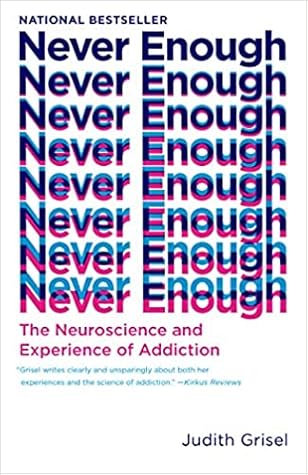More on this book
Community
Kindle Notes & Highlights
Read between
July 17 - July 18, 2020
As far back as I can remember, I felt hemmed in, frustrated by imposed limits and my own limitations. Longing for other, for something else, is at the core of my experience of self. Even today, below the persona of nurturing friend, committed partner, determined scientist, and adoring parent is a heartbreaking desire to embrace oblivion. From what or to where I seek escape, I really can’t say; I just know that the constraints of space, time, circumstances, obligations, choices (and missed opportunities) fill me with an overwhelming sense of desperation.
From the first delicious bong hits of the day until the final joint, I loved the taste, the smell, and the fabulous buffering effects separating me from the messy business of interacting with other people and fulfilling my daily obligations as, at the same time, weed lent promise of something new and glittering in the midst of the unappealing present.
So, if you smoke weed, remember that infrequent and intermittent use is the best way to prevent downregulation and its unfortunate effects: tolerance, dependence, and a loss of interest in the unenhanced world.
The truth is, we all contribute to the prevalence of these drugs in our communities by swallowing whole the illusion that suffering is avoidable by some outside “fix.” Together with our doctors, we’ve been in collective denial about the fact that these drugs are unable to provide a sustainable solution to the pains of living, and therefore the only real beneficiaries are the pushers, in this case, the pharmaceutical companies.
On the other hand, at moderate levels anxiety actually improves performance by boosting our energy level and helping us work or focus longer and harder. And anxiety may be an important survival tool because without it we wouldn’t be as likely to stay safe. Like many mental disorders, it is thought to reflect an excess of some healthy tendency; neither too little nor too much anxiety is ideal, and we can tell if it is too much when it impedes a person’s living to her fullest potential.
Theodore Roszak, who coined the word “counterculture” and chronicled the hippie movement, noted in 1969, Perhaps the drug experience bears significant fruit when rooted in the soil of a mature and cultivated mind. But the experience has, all of a sudden, been laid hold of by a generation of youngsters who are pathetically a-cultural and who often bring nothing to the experience but a vacuous yearning. They have, in adolescent rebellion, thrown off the corrupted culture of their elders and, along with that soiled bath water, the very body of the Western heritage at best, in favor of exotic
...more
For example, José Carlos Bouso and colleagues compared more than a hundred regular ayahuasca users with actively religious matched controls on a number of psychological variables including well-being, cognition, and several indices of psychopathology.8 Ayahuasca users were lower on all psychopathology scales, including tendencies toward OCD, anxiety, hostility, paranoia, and depression. They demonstrated no difference in cognitive measures but scored higher on measures of psychosocial well-being than a control group of religious subjects who did not use psychedelics.
The drugs induce activity in genes that are associated with neuroplasticity and disrupt established/default connections between groups of neurons, which “may allow the brain to re-enter a state of widespread global plasticity, whereby the maladaptive patterns responsible for the manifestation of psychiatric illness can be reset.”10
khat is so popular in Yemen that its cultivation consumes an estimated 40 percent of the country’s water supply. One “daily bag” of khat requires an estimated 500 liters (130 U.S. gallons) of water to produce, which has lowered the water levels in the Sanaa basin.
Rapidly accumulating evidence along these lines has many scientists thinking that as a culture we are involved in a giant experiment. It’s increasingly looking as if exposure to drugs of abuse in our parents and grandparents predisposes us to take drugs ourselves—effectively a b process across generations.
In addition to dampening reward sensitivity, THC acts in pathways that ascribe value or import to our experiences, and if these are muted, especially for a lifetime, the impacts are likely to be broad and deep. The heart of the matter is that the brain adapts to any drug that alters its activity and it appears to do this permanently when exposure occurs during development. The more exposure to the substance we have, and the earlier we have it, the more strongly the brain adjusts.
As I confronted my own assumptions, I realized how incredibly convenient a biological explanation for Native addiction rates would be for the rest of us. If we could attribute the epidemic of alcoholism and fetal alcohol effects on reservations to something about “them,” we wouldn’t have to ask about our complicity in the systematic denigration of their cultures, the theft of land and other resources, or realize that being exiled with little hope for personal growth or community prosperity might drive anyone to drink.


